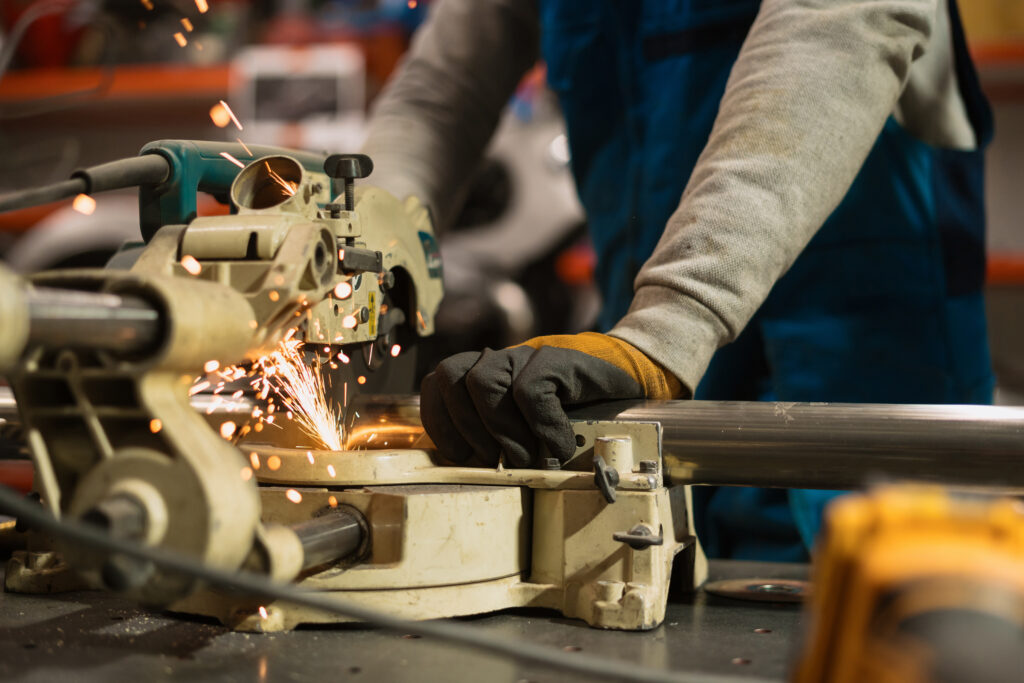Multi-axis machining has revolutionized the manufacturing industry by offering precision, efficiency, and versatility in creating complex parts and components. Among the various options available, 3-axis, 4-axis, and 5-axis CNC machining stand out as popular methods, each offering distinct advantages based on the intricacy and specifications of the required output.
In this article, let’s understand the basics of 3-axis, 4-axis, and 5-axis CNC machining and how to select between them.
3-Axis CNC Machining
3-axis CNC machining represents the foundational method in computer numerical control (CNC) machining. It operates along three axes: X, Y, and Z. This means the tool moves in three directions, allowing for cutting and shaping in three dimensions.
While 3-axis machining is highly capable and cost-effective for simpler geometries, it has limitations in producing complex shapes, curves, and undercuts due to the fixed cutting angles.
4-Axis CNC Machining
4-axis CNC machining introduces an additional rotational axis, typically the A-axis. This rotational capability enables the cutting tool to move along the X, Y, and Z axes, as well as rotate around the fourth axis. This added rotation enhances the machine’s ability to approach the workpiece from various angles, facilitating more intricate and detailed cuts.
4-axis machining is particularly useful for producing parts with cylindrical features, helical shapes, and more complex designs compared to the limitations of 3-axis machines
While 3-axis machining is highly capable and cost-effective for simpler geometries, it has limitations in producing complex shapes, curves, and undercuts due to the fixed cutting angles.
5-Axis CNC Machining
The pinnacle of CNC machining capabilities is found in 5-axis machining, which incorporates two rotary axes (A and B) along with the X, Y, and Z linear axes. This multi-directional and simultaneous movement grants unparalleled flexibility. It allows the cutting tool to reach virtually any surface angle or contour of the workpiece, reducing setup time and increasing overall efficiency.
5-axis machining excels in manufacturing highly complex components, such as aerospace parts, molds, and medical devices, where intricate geometries and tight tolerances are critical.
How to Choose Between 3-Axis Vs. 4-Axis Vs. 5-Axis CNC Machining?
The choice between these 3-axis vs 4-axis vs 5-axis CNC Machining methods depends on several factors, including the intricacy of the part design, production volume, precision requirements, and cost considerations.
For simpler parts with fewer complex features, 3-axis machining may suffice, offering a cost-effective solution. However, as part complexity increases, transitioning to 4-axis or 5-axis machining becomes essential to achieve the desired precision and efficiency.
It is important to note that while 4-axis and 5-axis machining offer advanced capabilities, they require higher initial investments in machinery and skilled programming. Additionally, their complexity demands experienced operators for optimal performance and accuracy.
Despite these challenges, the increased efficiency, reduced setup time, and ability to produce highly intricate parts often outweigh these initial challenges, making 4-axis and 5-axis machining indispensable in many manufacturing sectors.
5-axis machining excels in manufacturing highly complex components, such as aerospace parts, molds, and medical devices, where intricate geometries and tight tolerances are critical.
In Conclusion
As technology advances and becomes more accessible, the adoption of multi-axis machining will continue to redefine the boundaries of what is achievable in precision manufacturing. The choice between 3-axis, 4-axis, or 5-axis CNC machining ultimately depends on the specific requirements of the project.
At RAY Mechatronics, we’ve got you covered with an array of top-tier CNC machines. Our collection, sourced from renowned brands, guarantees the precision and quality you seek. Reach out to us for more information, and rest assured, we’ll get back to you within 24 working hours.






